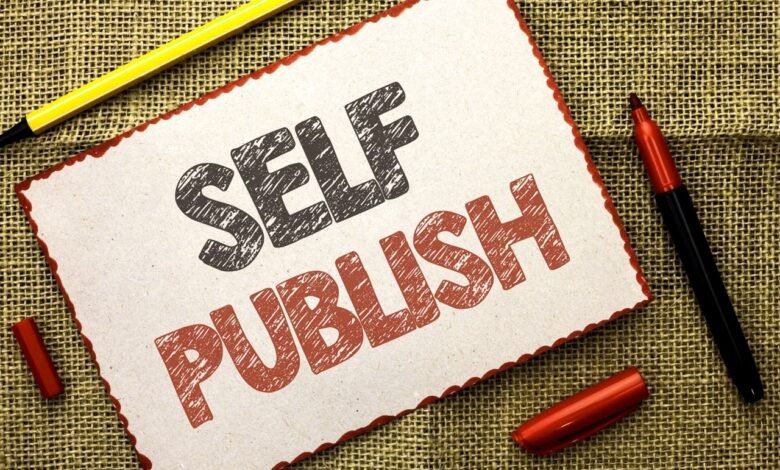From Idea to Impact: A Beginner’s Guide to Self-Publishing in 2025
Self-publishing refers to the process where an author publishes their work independently, without relying on a traditional publishing house.

The rise of self-publishing has transformed the literary landscape, enabling anyone with a story, idea, or expertise to share their voice with the world. As we step into 2025, this opportunity is more accessible and lucrative than ever. Whether you’re a budding novelist, a subject-matter expert, or a hobbyist with a unique perspective, this guide walks you through the entire self-publishing journey—from concept to cash flow.
EXPLORE THE CONTENTS
What is self-publishing?
Self-publishing refers to the process where an author publishes their work independently, without relying on a traditional publishing house. Unlike traditional publishing, where agents, editors, and publishing houses control most of the decision-making, self-publishing grants you full creative and commercial control. This includes choices about formatting, cover design, pricing, marketing, and distribution.
In 2025, the barriers to entry have lowered even further thanks to digital platforms, print-on-demand services, and AI-powered tools that assist with editing, formatting, and marketing. This democratization of publishing allows authors to bypass gatekeepers and directly connect with a global audience.
Step 1: Start with a Strong Idea
Every successful book begins with a compelling idea. Ask yourself, who is my target audience? What problem am I solving? What story am I telling that hasn’t been told—or hasn’t been told this way?
Whether it’s fiction, non-fiction, a how-to guide, or a memoir, clarity of purpose helps shape everything that follows—from tone to structure to marketing.
You can use tools like Google Trends, Amazon Bestseller Lists, or Reddit forums to validate your idea and ensure there’s demand. A unique concept that serves a niche often performs better than broad, unfocused writing.
Step 2: Create a Writing Plan
The second step is discipline. Writing a book takes time, and without a plan, it’s easy to abandon the project halfway. Create a writing schedule that fits your lifestyle. Tools like Scrivener, Notion, or even Google Docs can help you stay organized.
Break your content into manageable chapters or sections. If you’re writing fiction, outline plot points, character arcs, and settings. For non-fiction, create a structured table of contents. A solid framework can cut your writing time significantly and keep your narrative cohesive.
Step 3: Write and Revise Your Manuscript
Once your outline is in place, start writing without worrying too much about perfection. Your first draft is just that—a draft. Focus on getting your ideas on paper. Use writing tools like Grammarly, Hemingway Editor, or ProWritingAid to polish your language and improve readability.
After the draft comes the crucial process of editing and revising. Ideally, this should happen in multiple stages:
-
Self-editing for grammar, clarity, and structure.
-
Beta reading from peers or target audience members for honest feedback.
-
Professional editing for polishing the final draft.
A well-edited manuscript significantly improves your book’s credibility and reader satisfaction.
Step 4: Design Matters—Covers and Interiors
One of the biggest mistakes in self-publishing is underestimating the importance of book design. Readers do judge a book by its cover. Invest in a professional book cover designer who understands your genre. The cover should be both attractive and market-relevant.
Next, consider your interior formatting. Tools like Vellum, Reedsy Book Editor, or Atticus offer user-friendly interfaces for proper formatting across platforms like Kindle, Kobo, and print editions.
Consistency in font, spacing, and layout ensures a professional appearance, which is vital for reader retention and reviews.
Step 5: Choose the Right Self-Publishing Platform
In 2025, authors have numerous publishing platforms at their disposal. The best platform depends on your goals, genre, and audience. Here are the most popular:
-
Amazon Kindle Direct Publishing (KDP)—Ideal for broad reach and Kindle users.
-
Apple Books—Great for iOS-centric audiences.
-
Barnes & Noble Press—Excellent for U.S. readers preferring physical books.
-
IngramSpark—Best for wide distribution and bookstore access.
-
Draft2Digital—Good for simplifying multi-platform distribution.
Each platform has different royalty structures, file format requirements, and reach. Carefully review the terms and test a few options if needed.
Step 6: Set Your Price Strategically
Pricing your book is both art and science. Too high, and you deter casual readers. Too low, and you risk undervaluing your work. Research similar books in your niche, and consider testing several price points.
Amazon KDP, for example, offers 70% royalties on eBooks priced between $2.99 and $9.99. Outside of this range, royalties drop significantly. For first-time authors, offering promotional pricing or even free giveaways can boost visibility and gather initial reviews.
Step 7: Craft an Effective Book Launch Strategy
Your book launch is your first major marketing push, and a strong start can lead to long-term sales. Here are key elements of a winning strategy:
-
Email Marketing—Build a list before launch using a lead magnet (e.g., a free chapter).
-
Social Media Promotion—Leverage platforms like Instagram, TikTok, or X (formerly Twitter).
-
ARC Distribution—Send advance review copies to reviewers and influencers.
-
Amazon Ads—Use targeted pay-per-click campaigns to appear in relevant searches.
Timing is everything. Launch your book when your audience is most active—holidays, summer reading, or thematic events can all boost results.
Step 8: Build Your Author Brand
A book is just the beginning. To achieve long-term success, authors must build a recognizable and trustworthy author brand. This includes:
-
A professional author website.
-
A consistent social media presence.
-
Engaging with readers through blogs, newsletters, or podcasts.
-
Participating in online communities and forums in your genre.
People buy from those they know and trust. Your brand voice should reflect your style, values, and mission.
Step 9: Understand the Basics of SEO for Authors
To make your book discoverable online, especially on Amazon and Google, you need to optimize your metadata. This includes:
-
Keyword-rich book titles and subtitles.
-
Compelling book descriptions with searchable phrases.
-
Choosing relevant categories and tags.
Tools like Publisher Rocket and KDP Rocket help identify high-ranking keywords and low-competition niches. Ranking well in search results can significantly increase organic traffic and sales.
Step 10: Leverage Reviews and Testimonials
Book reviews play a crucial role in your book’s visibility and credibility. Encourage readers to leave honest reviews, especially on Amazon and Goodreads. Reviews influence the algorithm and reader decisions alike.
Reach out to book bloggers, review sites, and Bookstagrammers for wider coverage. Be respectful and follow their submission guidelines to build positive relationships that can benefit future launches.
Step 11: Explore Additional Formats
In 2025, reading isn’t limited to text on a screen. Diversify your content to tap into new revenue streams.
-
Audiobooks—Use platforms like ACX, Findaway Voices, or Google Play Books Audio.
-
Hardcovers and special editions—popular among collectors and libraries.
-
TTranslations—Reach international markets with multilingual editions.
Different formats increase reach and allow you to repurpose your content for wider impact.
Step 12: Monitor and Optimize Your Sales
Once your book is live, the work doesn’t stop. Use analytics tools provided by your platform to monitor sales, page reads, and customer behavior.
Make adjustments to:
-
Pricing strategies.
-
Cover design (if you’re seeing poor conversions).
-
Metadata and keywords.
Consider A/B testing elements like your book blurb, author bio, or advertising creatives. Even small changes can significantly affect your results over time.
Step 13: Keep Writing and Building Momentum
A single book rarely builds a full-time author career. Most successful self-published authors reach that level through multiple books—a series, spin-offs, or related topics.
Each new title builds your backlist, boosts discoverability, and increases your credibility. Readers who love one book are more likely to buy another. Keep writing, learning, and improving your craft.
Conclusion: Your Journey from Idea to Impact
In 2025, self-publishing is no longer the backup plan—it’s a legitimate, often preferred, path to authorial and financial success. With the right tools, mindset, and strategy, anyone can transform a simple idea into a published book that informs, entertains, or inspires.
From the initial spark of an idea to the ripple effects of your book’s impact, every step matters. Treat the process professionally, commit to learning, and never underestimate the power of persistence.
The tools are at your fingertips. The audience is waiting. Now is the best time to take your story from idea to impact.







